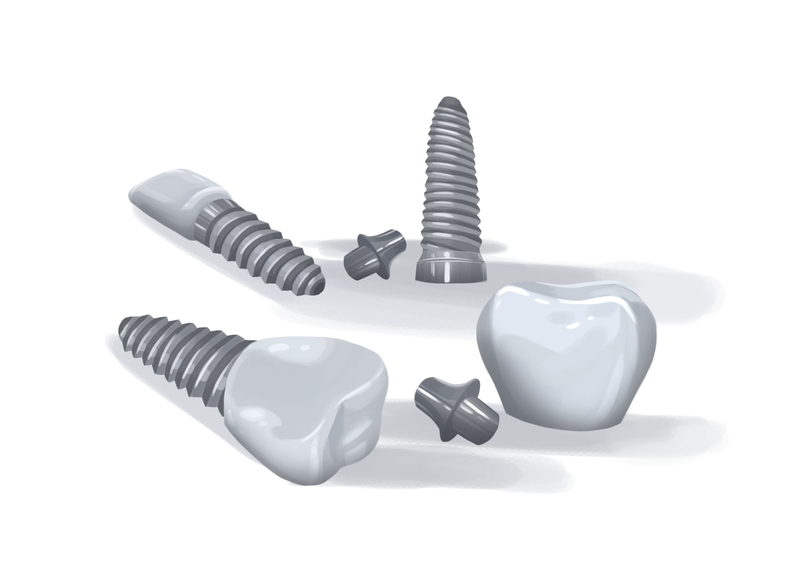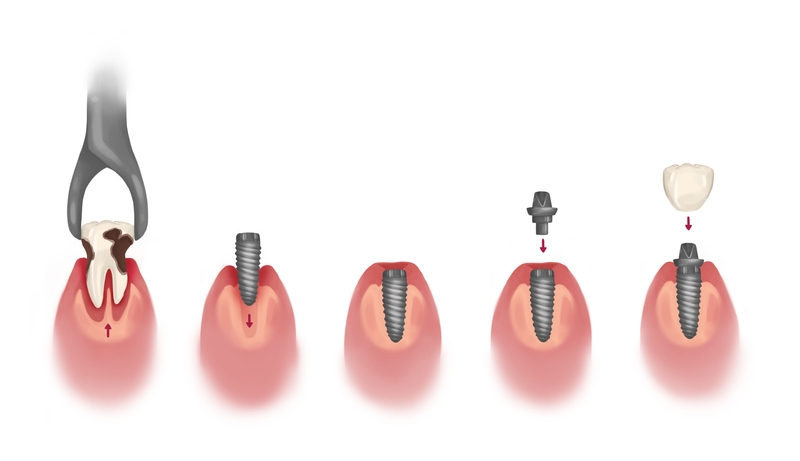- Zygomatic implants are an alternative to traditional implants for people with severe bone loss in the jaw.
- They are longer than traditional implants, which allows them to reach the denser zygomatic bone. This provides more stabilization for the implant.
- The procedure for placing zygomatic implants is similar to traditional implants, and the healing process is relatively quick. Zygomatic implants have a high success rate, but are more expensive than traditional implants.
Let us craft your ideal smile. Use Authority Dental to book a trustworthy dental implant dentist. It's simple, fast and trustworthy.
Is it possible to use implants to replace teeth if you have low bone density? Here's everything you need to know.
How do zygomatic implants wprk?

Picture by Authority Dental under CC 2.0 license
Zygomatic dental implants were designed for patients who have had too much bone loss for traditional implants. They are much longer than other dental implants because they must reach the zygomatic bone or zygoma. Your cheeks sit directly on top of the zygoma, so you can see that these implants are quite long.
Patients who have undergone bone loss are not ideal candidates for traditional implants. To even be considered, the patient would need bone grafting procedures, which are not always very successful. Zygomatic implants have made dental implants available to even those with severe bone loss.
"Zygomatic implants represent a true game-changer in complex restorative dentistry," Harry Lee, DMD, believes.
He explains: "For patients who have been told 'no' to traditional implants due to severe bone loss, this is the definitive answer. I explain that the problem in the upper jaw is often not the missing tooth but the lack of an anchor. After years of tooth loss or denture use, the maxilla (upper jawbone) shrinks dramatically, making standard implant placement impossible without lengthy, often unpredictable, bone grafting."
The zygoma, or cheekbone, is denser than other facial bones, providing even greater stabilization once the implant has had time to integrate with the surrounding bone. As with traditional implants, zygomatic implants can last a lifetime and restore full chewing function for people with missing teeth.
Zygomatic implant surgery and recovery

Picture by Authority Dental under CC 2.0 license
The procedure for placing zygoma implants is not much different from that of traditional implants. You will be numb during treatment and should only feel pressure and vibrations during the placement.
The recovery process is quick. You should expect some tenderness and swelling, but those symptoms should only last for 24-48 hours after the procedure. You can place an ice pack on your face and jaw periodically for the first couple of days to help with the swelling.
You should only experience mild discomfort, and your surgeon may recommend over-the-counter pain medications as needed. On the third day of recovery, you may notice more swelling and bruising as the area begins to heal. This is a good sign and should only last for a couple of days.
Make sure you stay hydrated and get plenty of healthy nutrition during the healing process.
What is the zygomatic implant success rate?
The zygomatic implant success rate is just as high as traditional dental implants - between 97% and 98%. Healthier patients with minimal health conditions and who are non-smokers may achieve better results than others.
Zygomatic implants cost
Zygomatic implants are more costly than other implants. The reason is that fewer dental providers can place these implants. They require a special technique and are usually performed by a specialist.
They can also vary based on where you live and how many implants you need. The average cost of zygomatic implants is between $12,000 and $30,000, while traditional implants cost between $3,500 and $6,700.

FAQ
Who is a good candidate for zygoma dental implant?
Several patient types are good candidates for zygomatic implants. Patients with mobile maxillary (upper) teeth are good candidates, as are patients who currently wear a traditional denture and would like better retention.
Zygomatic implants are also a treatment option for individuals who have had traditional implants that have failed or those who do not have enough supporting bone for regular implants.
Where are zygomatic implants placed?
Zygomatic dental implants are placed in the zygoma bone, which lies directly under your cheeks. They are placed at an angle, following the shape of your face.
Are zygomatic dental implants painful?
Placing zygomatic dental implants is no more painful than implants, which only cause mild discomfort. In fact, placing a zygomatic implant will prevent you from needing bone grafting, which would consist of several surgeries. A zygomatic implant will reduce pain and discomfort.
Your dentist or oral surgeon will administer an anesthetic and ensure you are comfortable throughout the procedure. Feeling pressure and vibrations are normal, but the procedure should not be painful.
What are possible complications after zygoma implant surgery?
Zygomatic implants have a high success rate of 97% to 98%. There are possible complications, as there are with traditional implants. You could develop sinusitis, which will resolve itself on its own.
You could also develop paresthesia, a tingling or prickling sensation, in the area of the implant placement. Implants are placed very close to nerves, and if one is disturbed, it could cause paraesthesia. Most of the time, this also resolves on its own.
Lastly, if the maxillary sinus is perforated, you may develop an oro-antral fistula. If this occurs, your surgeon may need to perform a simple procedure to close the opening between the oral cavity and maxillary sinus.
How long do zygomatic implants take to heal?
One of the great things about zygomatic implants is that they can be restored with an implant crown immediately. There is no healing time required for placing the crown. The gum tissue around the area may need a week or two to heal, and osseointegration of the bone and implant will not be complete for about 5 months.
Harry Lee, DMD
The genius of the zygomatic implant is that it completely bypasses the thin, resorbed jawbone by extending into the zygoma, or cheekbone. These implants are much longer than their traditional counterparts, serving as deep-set anchors in the dense, durable cheekbone. This provides the stability needed to immediately load the prosthesis and deliver a fixed, functional set of teeth, often in a single surgical appointment.